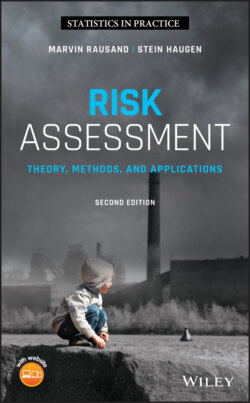Читать книгу Risk Assessment - Marvin Rausand - Страница 172
3.3 Risk Assessment Report
ОглавлениеThe risk assessment is usually presented in a report, but may also be accompanied by brochures, slide presentations, and videos. To be useful as a decision basis, the decision‐makers must be able to understand the conclusions and recommendations made by the study team. The information from the risk assessment must, therefore, be presented as clearly and concisely as possible.
The decisions to be made are often important and far‐reaching. It is, therefore, important that the decision‐makers can have confidence in all the findings made by the study team. The risk assessment reports must be well founded and trustworthy, and it must be possible to review and verify all the results. All conclusions and recommendations must be traceable to documents describing the background, models, input data, calculations, and so on.
The complexity of a risk assessment, and probabilistic methods in particular, may pose a significant barrier to understanding the report. It is, therefore, important that the main results be described clearly and documented in a language that decision‐makers and other stakeholders understand.
The level of detail in the report(s) should correspond to the risk level. A study object with a low level of risk typically requires a less extensive report than that for a study object with a very high level of risk.
How the report is written and the level of detail depends on the objectives of the study and for whom the report is intended, e.g.
1 The report will only be used as a decision basis for the line management, and no external parties are expected to get access to the report.
2 The report will be used by the company management to establish good risk management practices. Thus, the results of the risk assessment can be used to help define the requirements for various elements of the facility safety program, including maintenance, training, operating procedures, safety inspections and audits, and management of change.
3 The report will be presented to the board of directors as a background for strategic discussions.
4 The report will be made public. This is, for example, required for companies that have to fulfill the requirements of the EU Seveso III directive (EU 2012).
5 The results and the report will be presented at public meetings with stakeholders.
Some laws and regulations have special requirements to the format of the risk assessment report. This applies, for example, to the Seveso III directive.
